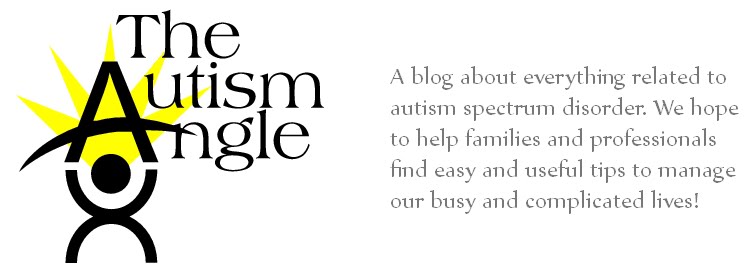Abby recently posted on object schedules (
go to post) and stressed the importance of using a schedule that is sensitive to the child's understanding at the current moment. She's right, we often jump too quickly to using an icon/word schedule with children who might not yet be identifying pictures, so how do we know when they're ready to use pictures?
- One way to access a child's understanding of pictures is to see if they can match them.
- Start with actual photographs first. This is less abstract than icons and may be more easily understood. See if your child can match exact photographs to each other
- Also see if your child receptively understands the picture. So, you may want to sit him/her at a table (to help with focus) and ask your child to "point to the playground," for example to see if they can identify that photograph and distinguish it from others. Some children may still recognize that the picture represents a place, however, so even if he/she cannot identify the picture of the play room by pointing to the picture, if they still take that picture to the area and recognize that play time is next, than that's o.k. The key here is to look at what your child understands independently (without anyone having to lead them to the area on the schedule item).
- If your child is showing skills in this area, then you may want to start using photographs. In this transition you can also put the actual photograph on the object and then gradually just use the photograph.
- Similarly, with icons start by seeing if your child can match icons to each other and identify the picture. For beginning readers, you can also include the word on the picture but if your child is still very young and not yet recognizing letters, then it's not necessary to have the word on the picture.
Using pictures for a schedule can certainly be overwhelming for parents in knowing where to start and where to find these resources. Just remember, it does not need to be beautiful, it just needs to be visual. So, if you can easily sketch a picture on a sticky note, that's perfect! For me personally, I can barely draw a stick-figure so it makes things a bit complicated..... so, where can you go for easy and free pictures?
Here are a few websites:
 |
| Examples of icons on Do2Learn Website |
Google Images--
www.google.com (click on images and just type in what you want to find). Especially if your child understands photographs better, this is a great site and even if your child is using icons (at school, for example) and understands those, it's still o.k to use actual exact images-- they will still be understandable! You can easily print out schedule items that you are likely to use on a daily or weekly basis, such as errands you run (Target, Grocery Store etc) or activities at home, like Dinner Time, Getting Dressed, etc.
Do2Learn-- http://do2learn.com/. This site has tons of printable icons for free. They are mostly in black and white and you can print them either with or without words. I love this site because it has tons of pictures for daily living skills and activities in the home and the community. It's a great resource for parents!
Autism Buddy- www.autismbuddy.com. You will have to join this site, but it's free and then you can download many visuals and other activities. They have many clipart images that you may also be able to get on your computer.
Visual Aids for Learning-
http://www.visualaidsforlearning.com/index.htm. This is a great website for free images as well. You can download complete packages, such as the "Early Childhood package" or "School package", even a "Toilet Training package" with tons of images related to these categories.
Board Maker: This program is super expensive (
check it out), but if you work with lots of children or for a company that would pay for it :), this is a nice program where you can type in what you're looking for and it will produce an color icon that you can then print out. I would recommend checking out the free websites before investing in such an expensive program first though!
Again, it can often be overwhelming to know where to start in using a schedule
with your child and I think picture schedules can often be the most intimidating.
Here are some points to keep in mind that might make it easier:
- It does NOT need to look beautiful. You do NOT need to laminate. Card stock or contact paper are other options for more sturdy cards
- It's o.k to simply draw something out and put it on a stick note-- or use stickers, whatever is easy!
- Get out your camera and take pictures! Digital camera make this a lot easier this day and age!

- If you do not have a picture handy, use an object to aid in understanding. For example, it's time to get in the car and you don't have a picture and your child is reluctant to transition. Grab your keys and hand them to your child and say, "time to go in the car."
- You do not need to run out and buy a bunch of velcro. You can use paperclips on a sheet of paper to present the pictures in a top-bottom or left-right fashion.
- Don't try to initially schedule the ENTIRE day. Just start with part of it. Once the child is used to using the schedule and understands it, then just start with using a schedule at home during the most difficult times and you can always add to it!
Stay posted for future posts on why we use schedules, how much info to include on schedules, and how the person with ASD can interact with or manipulate the schedule!
- Molly









